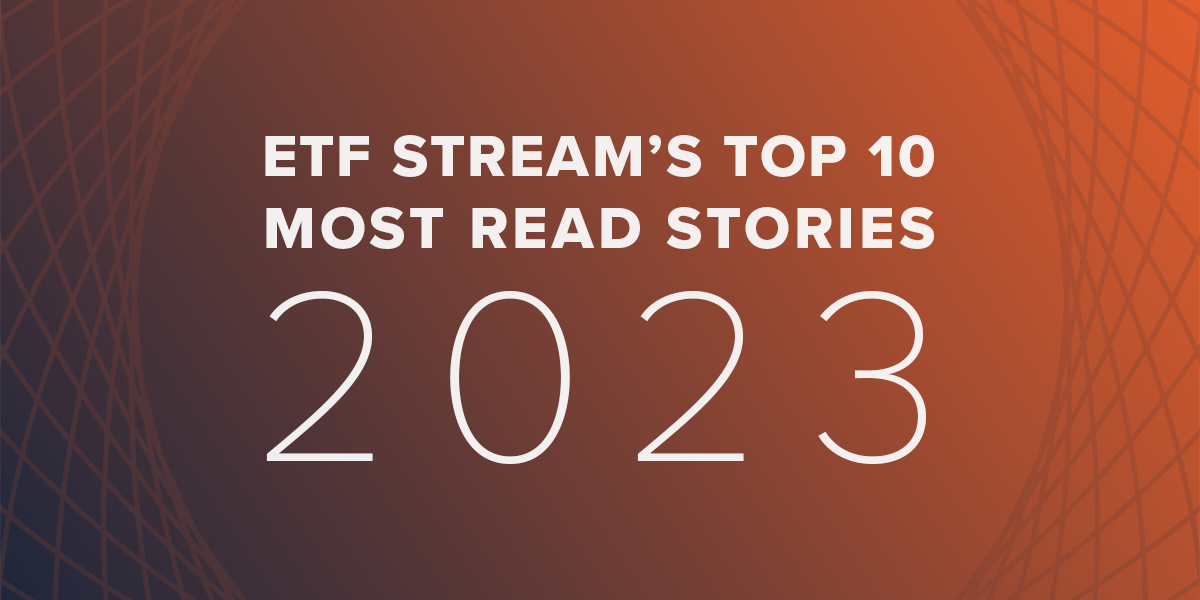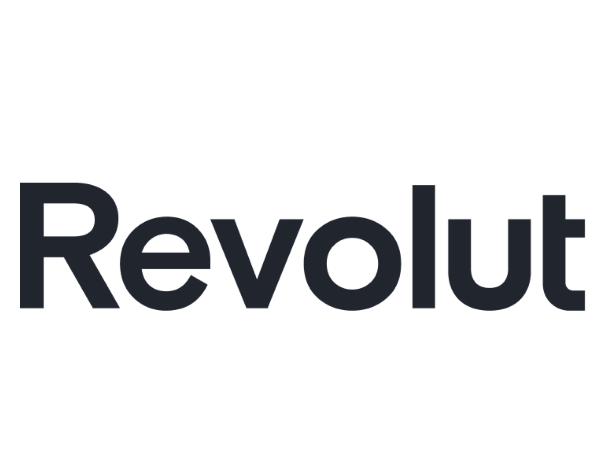ETFs continued to cement their status as the wrapper of choice in 2023 amid another year of outflows for active mutual funds.
European ETFs saw €180bn more inflows than their rival structure in the first 11 months of the year as active mutual funds booked €91.9bn net redemptions, according to data from Refinitiv.
Fixed income ETFs drove the market considerably, with the asset class accounting for 45% of all ETP flows in 2023 while the rise of retail ETF adoption spurred growth into core products.
After an exciting 12 months in the ETF space, here are the top 10 most read stories on ETF Stream in 2023.
1. Ireland is tax efficient for ETFs, except for Irish investors
The most read story of 2023 revealed that while Ireland is an attractive location to domicile ETFs for European investors thanks to tax-efficiency benefits, Irish investors still faced tax challenges.
Irish investors pay a 41% exit tax on profits when they sell ETFs within eight years, contrasting the 33% capital gains tax on profits made when selling stocks.
Furthermore, long-term local investors are subject to the sting of Ireland’s ‘deemed disposal’ system, paying 41% tax on gains even if they do not exit their position.
The bad news for local investors sits in stark contrast to its structural benefits for European investors, with Ireland's ETF assets surging from $305bn in 2017 to $953bn by the end of the previous year.
2. Big Short’s Michael Burry bets against S&P 500 and Nasdaq 100
The second most-read story came in August when news broke that hedge fund manager Michael Burry, who inspired The Big Short, held over $1.6bn in bets against the S&P 500 and Nasdaq 100 benchmarks.
His firm, Scion Asset Management, held $886m of put options against SPDR S&P 500 ETF (SPY) and $739m on Invesco QQQ Trust ETF (QQQ) at the close of Q2.
Burry's bets followed a tweet in March where he admitted he was wrong about advising investors to "sell" at the beginning of the year.
The hedge fund manager’s bets in August mirrored his sentiment in January, yet with another half year of stellar broad market returns to support the view of investors being overly speculative.
3. BlackRock, Vanguard and State Street have ‘among the strongest’ incentives to engage
A paper by the National Bureau of Economic Research (NBER), titled the Corporate Governance Implications of the Growth of Indexing, found the ‘Big Three’ – BlackRock, Vanguard and State Street Global Advisors (SSGA) – have just as much incentive to engage as active managers, given their large ownership stakes across listed companies.
The paper argued there are “substantial direct incentives” for large index fund providers. Although their management fees are far lower than actively managed funds, their large assets under management (AUM) and corporate ownership means their incentive to increase value through engagement are “comparable in magnitude to those of activists”.
However, NBER noted several distinctions in the kind of engagement being conducted. For instance, active mutual funds and hedge funds have an edge when engaging on financial information at a firm-specific level, whereas index funds were better-positioned to have a market-wide view on corporate governance standards. Passive funds were also 9.5% more likely to vote in line with company management on issues such as director elections.
4. ETFs with the highest exposure to Nvidia
In May, ETFs with heavy Nvidia weightings were boosted after the chipmaker hit a $1trn market cap.
The tech giant enjoyed its share price being bumped up 35% after $7.2bn of sales were comfortably ahead of forecasts of $6.5bn. Net income of $2bn also followed suit, ahead of $1.5bn predictions.
Against a backdrop of better-than-expected Q1 results, attributed to the company’s AI focus, thematic ETFs with heavy Nvidia weightings saw a boom at the end of May.
More specifically, within thematic ETFs, semiconductors, metaverse and AI, all experienced significant uplifts thanks to Nvidia exposure.
Despite gains, some concerns about valuations in the AI space remained among analysts, with the sector trading at significant multiples.
5. BlackRock launches Europe’s first fixed maturity bond ETFs
BlackRock introduced Europe's first fixed maturity corporate bond ETF range in August, with the four ETFs tracking investment-grade corporate bonds with defined individual maturities.
The two fixed maturity dates are December 2026 and 2028, respectively, with the option of US dollar- or euro-denominated debt.
The ETFs will be ESG-screened, earning an Article 8 classification under the Sustainable Finance Disclosure Regulation (SFDR).
BlackRock launched the first iBonds ETF in the US in 2010, with the range seeing a combined $13.3bn inflows in 2022 and 2023 alone, as at the end of July.
6. Ruler of the world ETFs: BlackRock MSCI World vs Vanguard FTSE All-World
The sixth most read article this year analysed ETFs from BlackRock and Vanguard, comparing the $57.8 billion iShares Core MSCI World UCITS ETF (SWDA) and the $19.1 billion Vanguard FTSE All-World UCITS ETF (VWRP).
Launched in 2009, SWDA tracks the MSCI World which offers exposure to 1,517 large and mid-cap companies. This index is heavily weighted towards tech and US-centric companies.
VWRP was launched in 2012 and tracks the FTSE All-World index. The ETF offers exposure to 3,686 large and mid-cap stocks representing 90-95% of the investable market cap of “nearly” 50 developed and emerging markets.
Overall, Vanguard’s ETF uses full replication and casts a wider net to offer global exposure that does what it says on the tin. BlackRock’s candidate has edged a lead on performance with its narrower basket and nimbler optimised sampling approach.
7. BlackRock’s clean energy ETF hits three-year low
In August, Europe's largest thematic ETF, BlackRock's iShares Global Clean Energy UCITS ETF (INRG), continued to fall from its previous lofty heights.
INRG, which surged 144.3% in 2020 on optimism surrounding President Joe Biden's sharpened focus on clean energy, was within 1.7% of its price three years ago in August.
The challenges stem from a combination of rising interest rates, geopolitical uncertainties and a reassessment of the cost and viability of mainstream clean energy adoption.
Despite these challenges and INRG dropping 22.2% so far in 2023, investors remain committed to the strategy and have added a considerable $2.2bn net new assets since the ETF began falling from its all-time-high.
8. State Street to offer Europe’s cheapest S&P 500 ETF after drastic fee cut
In October, SSGA said it was offering the cheapest ETF in Europe after slashing the fees on SPDR S&P 500 UCITS ETF (SPY5) by two-thirds.
The TER of SPY5 was decreased from 0.09% to 0.03%, making it the cheapest S&P 500 ETF in Europe, undercutting the Invesco S&P 500 UCITS ETF (SPXS).
The fee reduction also extended to SSGA's other S&P 500 ETF suite, the SPDR S&P 500 EUR Hdg UCITS ETF (SPPE) and the SPDR S&P 500 ESG Leaders UCITS ETF (SPPY).
This move follows a broader trend of fee reductions from SSGA, making its ETFs more accessible to investors.
9. Revolut launches ETF trading platform in Europe
Revolut announced its partnership with Berlin-based fintech Upvest to launch an ETF trading platform for retail investors across Europe.
The platform will allow access to 158 ETFs for as little as €1 via its fractional shares offering.
Revolut is a UK-based super app with approximately 29 million customers globally. The partnership is well aligned with the company’s ambitions to capitalise on the growing interest in ETFs among retail investors.
Retail investors are expected to help triple ETF assets under management in Europe from $1.3trn to $3trn by 2027, according to PwC.
10. JP Morgan AM launches global equity version of $30bn premium income ETF
Earlier this month, JP Morgan Asset Management (JPMAM) launched an active global equity premium income ETF to act as a buffer for investors during volatile markets.
The JPMorgan Global Equity Premium Income UCITS ETF (JEPG) is listed on the London Stock Exchange, Euronext Milan, Deutsche Boerse and the SIX Swiss Exchange, with a total expense ratio (TER) of 0.35%.
JEPG is a global equity counterpart to the US-listed JPMorgan Equity Premium Income ETF (JEPI), which has amassed $30bn in assets since its launch in May 2020.
JEPG offers investors a consistent income of 7-9% a year, paid monthly, while delivering less volatility versus its benchmark, the MSCI World.
The actively managed ETF involves taking small overweight and underweight positions in companies relative to the index, while generating income by selling index options on the S&P 500 and MSCI EAFE against JEPG’s portfolio.







